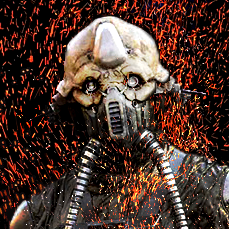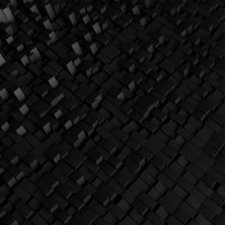-
Content Count
17 -
Joined
-
Last visited
Community Reputation
5 NeutralAbout ApanLoon
-
Rank
Jedi Apprentice
Profile Information
-
Gender
Not Telling
-
Location
Sweden
Recent Profile Visitors
4,139 profile views
-
Wow, that is weird - what a terrible waste of texture memory. I assume that these textures are generated by some form of ray tracing. Makes it really tricky to make light map mods though. :-( Thanks for checking it out. Perhaps this is the cause of some other textures looking weird too - they might also be generated by some tool that doesn't care about memory efficiency.
-
It is Christmas time again and my holiday has started. I decided to look into some of the TPC variations that my little tpc tool still can't read. Lightmaps are weird. Has anyone examined/used those? These images appear to break the rules. The number of pixels in the data matches the width and height specified in the header, but the actual image content does not. Instead it appears to be split up in 10 rows and 10 columns of square blocks padded by black pixels on the right and bottom. Converting 3dgui_a00001.tpc with my tool (as well as any other tool I am aware of) shows a number of 5x5 squares in the top left corner of the converted image. (See attached 3dgui_a00001.png) I can manually assemble these squares into something that looks more like the desired end-result. (See 3dgui_a00001-assembled.png) Doing something similar with PLCaa_a00005.tpc again yields a much more sensible light map. Here the squares are 17x17 pixels and the order of the assembly is reversed - columns become rows. I can see nothing in the header or the TXI that would help the tool to assemble these images correctly. Can anyone shed some light on this? (Pun intended) P.S. The scale of the thumbnails are misleading, the size of the assembled images are 50x50 and 170x170 respectively.
-
I am pretty sure that you could use imagemagick for making a script that does the same thing as that workaround. Inagemagick works well in Cygwin under Windows or in Linux/OS X.
-
That is what I thought too.
-
It would surprise me if the presence of the "cube map" TXI-attribute implies that the alpha is a "shininess" map. I am pretty sure that I have seen specific attributes for that and, until now, I didn't know what they did. I will examine this when I get back to my computer. I would appreciate a link to that forum thread. I tried to search for it but it is difficult on the phone.
-
That looks really interesting, perhaps I should make a fork of CSharpImageLibrary, adding TPC support, and then use that in the tpc tool. It even has DXT compression done.
-
Interesting. I thought that since normal maps are stored in separate files, reflection maps and such would also be stored in separate files. I will think about how to handle this. Most likely, I will make an option to extract the alpha channel as a separate gray scale image and then add the possibility to provide two PNGs to create a new TPC file. For now, this work-around in Photoshop might work: Open the converted PNG Menu: Layer->Layer Mask->From Transparency Alt-LeftClick the mask Ctrl-a Ctrl-x to cut the mask out. This will make the mask completely white, meaning that you can see all that info that the alpha channel was hiding Menu: Layer->New->Layer Ctrl-v to paste the mask into the new layer Edit the image and alpha layers to your hearts content With the alpha layer selected, ctrl-a ctrl-c Alt-LeftClick the mask of the image layer Ctrl-v to paste in the edited alpha channel Hide the "alpha" layer Save as PNG Use the tpc tool to create a new TPC file based on the new PNG file I am not 100% certain that this will be perfectly accurate, but I think that it should work even if it is a bit clunky. Also, the tpc tool still can't create DXT-compressed images. @sELFiNDUCEDcOMA about the GUI Yes, that is one of the main points of this exercise: The code is structured so that there are libraries that handle the file formats and separate console applications for the tools I provide. Anyone could use the same libraries in their own GUI application directly, or call the console applications when needed. Many options are available. @Malkior The TXI can say many things. Most, as I understand it, has nothing to do with the alpha channel. Is there a list somewhere that explains what the various TXI attributes do? I have guessed many, but it would be nice to build a comprehensive list in a public space.
-
ApanLoon started following [TOOL] KotOR Stuff
-
Is the alpha channel used for anything other than transparency in game? If so, what?
-
Assistance requested: This will be a long post. It contains some tips about how to use the tpc tool but also questions about further development of the tool. I just added the possibility to extract the TXI to a separate file when reading a TPC and conversely, to read the TXI from a separate file when creating a TPC. However, the command line options are a bit weird at the moment. I would like to get feedback on how these should be changed to make them more intuitive. For the rest of this post, I will be talking about the current development branch on GitHub and NOT the currently released version. It behaves differently in regards to TXI. The current help info looks like this: $ ./tpc -h Usage: tpc.exe [OPTIONS]+ [FILE]+ Operate on files in the Bioware TPC format. Options: -n, --nofile Don't output to a file, instead use stdout. -o, --output=VALUE The format of the output file(s). Possible options are: png, tif, raw, hex, tpc, none -i, --image=VALUE The index of the image to extract. -s, --subimage=VALUE The index of the sub image to extract or the number of sub images to generate in new TPC. -t, --txi[=VALUE] Dump the texture info or add TXI attribute to new TPC. When adding an attribute, use the form - -txi="key value..." --txipath=VALUE Create this separate TXI file when reading a TPC or read this separate TXI file when creating a TPC. -c, --compress Use DXT compression when creating new TPC. -f, --format=VALUE Pixel format for new TPC. Possible options are: Gray, RGB, RGBA, BGRA -p, --outpath=VALUE Path and file name of output. Default is the same as the input with a new extension. -h, --help Show this message and exit Unless the nofile option is given, tpc.exe prints information about the file on stdout. This example explains what is shown: zc 64 64 6 7 42 RGBA 1 CM_rakata.tpc Flags: z=DXT compression, c=Cube map Width Height: Of the full-size version of the image(s). Each additional sub image, if any is reduced in size by half width and half height. Number of images: The number of full-size images. Cube maps have six images. Sub images per image: The number of sub images for each image. The first is the full-size image, subsequent sub images are mip maps. Total number of sub images: The header of some files indicate more sub images than there is data for in the file. This shows how many sub images there actually are. Pixel format: Gray, RGB, RGBA, SwizzledBGRA Unknown1: Float value of unknown purpose. Full path to the file I realise that not many of you have even tested this yet, but I would like to have a cleaner way to tell the tool what type of output to generate and where to put that output. The tool basically outputs three things: Info, Image and TXI I think that he most common usage would be to output the image and TXI to files and print the info on stdout. Currently, this is what happens if you, for example, run this: tpc -o png -t PO_PFHA3d.tpc C_HoloDodonna.tpc The new files will be named PO_PFHA3d.png, PO_PFHA3d.txi, C_HoloDodonna.png and C_HoloDodonna.txi respectively and the info for the two TPCs are printed on stdout. It is possible that, in some situations, you would want the image data to be sent to stdout instead of a file. An example of this would be if you want to rotate an image with something like ImageMagick before storing the file: tpc -n -o png CM_HawkBay.tpc | convert - -rotate 90 CM_HawkBay.png I don't know if this works in Windows "cmd" application, but I do know that it works in "bash" on Linux, OSX and Cygwin under Windows. You also might want to filter stuff out from the info: tpc -o none *.tpc | grep "RGB " only lists the info for RGB files. Note the extra space at the end of the grep to make sure that it doesn't also match RGBA. We can also get the TXI on stdout: tpc -n -o none -t C_HoloDodonna.tpc | grep proceduretype When you specify that the tool should not send output to a file with -n, the tool won't output the info as that would interfere with the image or TXI output. "convert", for example, would fail to read the png if the data also contained the text of the info. Now we arrive at the more complex situations. What if we want both the info and the TXI on stdout? Like the currently released version does with -t? It would be nice to see what TXI belongs to what TPC file when listing more than one. We might try: tpc -n -o none -t *.tpc | grep proceduretype But this doesn't do exactly what we want. From the result of this we will get a list of all proceduretype attributes, and that could be useful too, especially if you add " | sort | uniq" to the command line. However, we won't see which file has which attribute and that would probably be useful. There is no way to do this yet. Question 1 to you is: What options should we have to make this happen? Note that, when working on a lot of files, you might get an error such as this: -bash: ./tpc: Argument list too long If that happens, you should embed your command in a "find": find AllTPCs/ -exec tpc -n -o none -t "{}" "+" | grep proceduretype | sort | uniq The "+" will make find call tpc multiple times with an optimal(?) number of files each time. Question 2 to you is: Are there other combinations of outputs that would be useful? Sending TXI to a file while sending the image to stdout or sending the info to a file, or... Question 3 to you is: What additional options do we need? One I know already is that we should have a way to specify the unknown float that is put into new TPCs. Currently, this simply defaults to 1.0. Question 4 to you is: What features/bugs need to be addressed and in what order? I.e. What features are most important to you?
-
Cool. I am happy that you like it. There are still some types of TPC files that this tool can't read and there are some questionable assumptions in the current code. I would appreciate any and all assistance making the code better and more complete. I was told that TGA support is kind of important, so I might look into ways to add that. The library I use can't do TGA - only BMP, EMF, EXIF, GIF, ICO, JPEG, PNG, TIF and WMF. Adding more of those would be trivial, adding TGA is a bit of work but not too complicated, I think.
-
View File KotOR Stuff KotOR Stuff provides several tiny command-line tools that each perform a small task. With scripting, these tools could be used to simplify batch processing or support other tools that perform more complex tasks. Currently three tools are included: bif - Extract assets from KeyTable/BIF repositories erf - Extract assets from ERF/MOD/SAV and HAK repositories tpc - Convert TPC files to PNG or PNG files to TPC. Use command line options to select which side of a cubemap, what frame of a cycle animation or which mip map to convert. Can also list TXI attributes if any are present. Submitter ApanLoon Submitted 07/17/2017 Category Modding Tools
-
UPDATE: v0.3 The tpc tool can now convert PNG files to uncompressed TPC files. The following example creates an uncompressed RGB file with two sub images (One full scale and one half-scale mip map) and a couple of TXI attributes: tpc -o tpc -s2 --outpath PO_PFHA3d.tpc -txi="proceduretype cycle" -txi="channelscale 4 0.1 0.2 0.3 0.4" PO_PFHA3d.png Note that it might still not be possible to create cyclic procedurals with this tool, I just added those TXI attributes to illustrate how it should be done. To get some more info about what TXI attributes are used in game and how they need to be formatted for this tool, use the following command to examine an existing TPC file: tpc -o none -t PO_PFHA3d.tpc Run this on one, some or all the files in the texture pack to see what's in there.
-
Version 0.3
377 downloads
KotOR Stuff provides several tiny command-line tools that each perform a small task. With scripting, these tools could be used to simplify batch processing or support other tools that perform more complex tasks. Currently three tools are included: bif - Extract assets from KeyTable/BIF repositories erf - Extract assets from ERF/MOD/SAV and HAK repositories tpc - Convert TPC files to PNG or PNG files to TPC. Use command line options to select which side of a cubemap, what frame of a cycle animation or which mip map to convert. Can also list TXI attributes if any are present. -
I started to work on a set of small tools for extracting assets from KotOR. These tools are not in any way competing with more complex tools such as "KotOR Tool" or "KotOR Toolset". Those focus on giving a complete experience - a complete solution for all your modding needs. KotOR Stuff does the opposite. KotOR Stuff provides several tiny command-line tools that each perform a small task. With scripting, these tools could be used to simplify batch processing or support other tools that perform more complex tasks. Currently three tools are included: bif - Extract assets from KeyTable/BIF repositories erf - Extract assets from ERF/MOD/SAV and HAK repositories tpc - Convert TPC files to PNG. Use command line options to select which side of a cubemap, what frame of a cycle animation or which mip map to convert. Can also list TXI attributes if any are present. Future releases of this project may include: Creating new BIF/ERF/MOD/SAV and HAK repositories Adding resources to BIF/ERF/MOD/SAV and HAK repositories Convert PNG to TPC given additional information on the command line Improved TPC support: Even though the tpc tool can correctly convert some TPC types that "KotOR Tool" can't, some image types are still not handled correctly. For example, cube maps with only four sides exist but can't be converted yet. Future releases of this project will probably not include: Pretty GUIs that makes modding a breeze for anyone (That is what "KotOR Tool" and "KotOR Toolset" are for.) C# source code can be found here: https://github.com/ApanLoon/KotORStuff Binary version for Windows (might also work with mono on other platforms) can be found here: http://deadlystream.com/forum/files/file/1128-kotor-stuff/
-
That depends on what is still needed. I don't have any specific plans for anything. I do know that the current version of mdlops and kotorblender doesn't exactly do what I want them to so I started talking with Purifier about the latter. I will take it from there and we will see. If anyone has suggestions, I am open to them. I don't exactly know who currently maintains the tools and how contributing to them works, but I would like to know.






